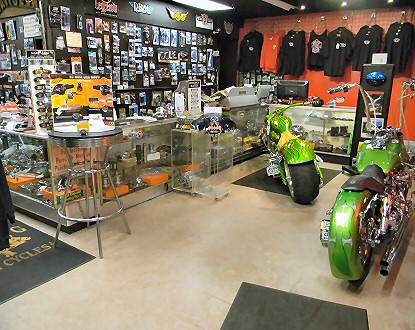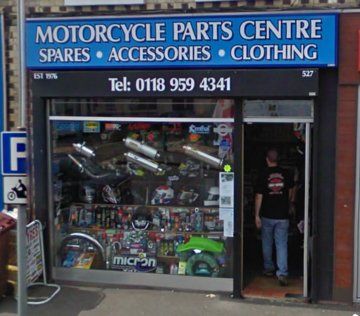Locate Affordable Costs on Motocross Parts NZ for each Bike
Locate Affordable Costs on Motocross Parts NZ for each Bike
Blog Article
Recognizing the Vital Parts of a Motorbike: A Comprehensive Overview for Lovers
For bike fanatics looking to raise their riding experience and guarantee their bikes run smoothly, comprehending the crucial parts of a bike is extremely important. Each component, from the engine's detailed operations to the critical duty of the stopping devices, not just influences performance but also safety and comfort.
Engine Elements

The camshaft plays a vital role in regulating the timing of the engine's shutoffs, guaranteeing the accurate opening and closing necessary for effective gas and air intake, as well as exhaust expulsion. This timing is important to preserving optimum engine performance and performance. Additionally, the carburetor or fuel injection system, depending upon the motorbike model, is liable for mixing air with gas in the right proportion for burning.
The air conditioning system, either air or liquid-based, functions to keep the engine's temperature level within functional limitations, preventing overheating and making certain longevity - mx parts nz. Each component, carefully created and incorporated, adds to the smooth operation of the engine, defining the motorcycle's power result and overall performance
Transmission System
Essential to the motorbike's performance, the transmission system makes sure reliable power transfer from the engine to the wheels. This system consists of numerous essential components, including the clutch, gearbox, and final drive, each playing a vital role in translating the engine's power into movement. The clutch, usually run by a hand bar, offers to involve and disengage the engine from the transmission, permitting smooth equipment modifications and regulated velocity.
The transmission, often described as the transmission correct, includes a collection of equipments that riders can manually change via to readjust the bike's speed and torque output. These gears are set up in a series that makes it possible for the motorbike to speed up smoothly and keep ideal engine efficiency across different speeds. Many motorcycles utilize a sequential gearbox, needing the motorcyclist to change gears in a fixed order.
Braking Systems
While recognizing the transmission system is key to utilizing a motorbike's power, equally crucial is the capacity to manage and stop that power properly, which is where braking systems come right into play. Brakes are crucial for safety and security and efficiency, offering the motorcyclist with the necessary control to browse different terrains and conditions. Typically, motorcycles feature 2 sorts of stopping systems: disc brakes and drum brakes.
Disc brakes are a lot more prevalent in modern-day motorcycles because of their exceptional efficiency. They consist of a brake disc, caliper, and pads. When turned on, the caliper squeezes the brake pads versus the rotating disc, converting kinetic power into warmth, therefore slowing down the wheel. This system offers much better warmth dissipation, constant performance, and improved stopping power, especially in damp conditions.
Alternatively, drum brakes, though much less typical, are still located in some motorcycles. They work by pushing brake shoes against the inner surface area of a drum connected to the wheel. While generally much less efficient in warmth dissipation and quiting power, drum brakes are simpler and extra cost-effective.
Recognizing these stopping systems' subtleties allows motorcyclists to maintain their motorbikes properly and value the engineering that ensures efficient and risk-free stopping.
Suspension and Steering
Suspension and steering systems are essential elements that dramatically affect a motorcycle's handling and ride comfort. The shock absorber, containing forks at the front and shock absorbers at the back, absorbs roadway abnormalities, boosting security and control. Front forks, upside down or commonly telescopic, compress and rebound to minimize influences, while back shock absorbers maintain tire call with the roadway, critical for grip and security.
Steering, centered around the handlebars, attaches the biker to the motorcycle's directional control. The guiding head bearings make certain smooth procedure, enabling accurate maneuverability. Correct placement and upkeep of these bearings are important for predictable guiding feedback and minimizing biker fatigue.
The suspension's adjustability is an additional important element; preload, damping, and rebound settings permit modification to fit various riding conditions and styles. This versatility is essential for enhancing efficiency, whether browsing city streets or tackling sturdy routes. Developments like electronic shock absorber offer real-time modifications, improving ride high quality across varied surfaces.

Electric Systems
After making certain a controlled and smooth adventure with reliable suspension and steering systems, focus transforms to the electrical systems, an essential aspect of contemporary bikes. These systems play an essential duty not just in starting the engine however also in powering different parts that enhance the performance and safety and security of the motorcycle.
At the heart of a motorbike's electric system is the battery, which stores electric energy necessary for starting the engine and powering complementary systems - motox parts nz. The alternator or generator, combined with the rectifier-regulator, makes sure the battery continues to be billed while the motorcycle functions, converting power right into electric power and maintaining voltage levels
The ignition system, another essential component, is accountable for igniting the air-fuel combination in the engine's cyndrical tubes. Modern motorbikes frequently use an electronic ignition system, using greater efficiency and dependability compared to standard systems.
Lights systems, including fronts lights, tail lights, and signs, are likewise vital, making sure presence and security for the biker. Extra digital elements such as sensing units, control units, and shows add to sophisticated functions like gas shot management, anti-lock braking systems (ABS), and digital dashboards, better boosting the riding experience.
Verdict
A comprehensive comprehension of a motorbike's necessary elements, including the engine, transmission system, stopping mechanisms, suspension, guiding, and electrical systems, is important for enthusiasts intending to optimize safety and security, convenience, and efficiency. Proficiency of these components enables educated decisions relating to maintenance and upgrades, ultimately enhancing the riding experience. By integrating this understanding, motorcyclists can ensure their bikes operate at peak efficiency and integrity, consequently making the most of both enjoyment and longevity of their cars.
For bike fanatics looking to raise their riding experience and ensure their bikes run efficiently, understanding the important components of a bike is paramount.Essential to the bike's functionality, the transmission system makes certain reliable power transfer from the engine to the wheels.While recognizing the transmission system is crucial to harnessing a motorbike's power, similarly vital is the capability to manage and quit that power effectively, which is where stopping systems come right into play. Usually, motorcycles include 2 types of stopping systems: disc brakes and drum brakes.
An extensive understanding of a motorbike's essential components, including the engine, transmission system, braking mechanisms, suspension, steering, motocross gear nz and electrical systems, is important for enthusiasts intending to maximize convenience, safety, and performance.
Report this page